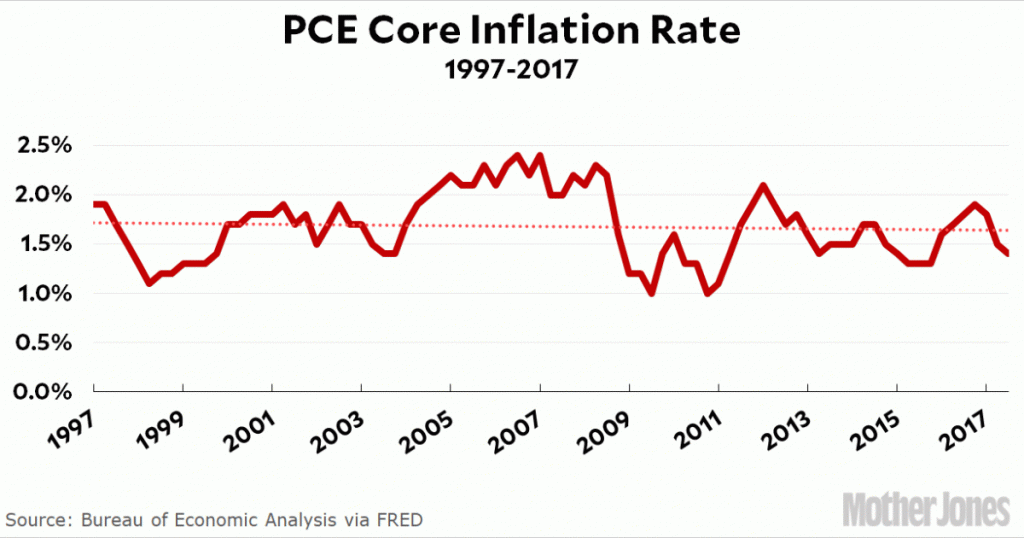Your Smartphone Is the Latest Excuse for Low Inflation
Looking for news you can trust?Subscribe to our free newsletters.
Here’s the latest bizarre excuse for low inflation:
Holiday shoppers with smartphones can retrieve instant price comparisons that make bargain hunting easier—and the Federal Reserve’s job tougher….Most Fed policy makers agree they should keep gradually raising short-term rates in the months ahead to prevent the buoyant U.S. economy from overheating. But some are hesitant because inflation remains puzzlingly weak, running below 2% for most of this year. Moving too quickly could stall growth.
….In a nod to the growing practice, Ms. Yellen said in September that increased competition created by online retailers “may have reduced price margins and restrained the ability of firms to raise prices in response to rising demand.” She said in October that online shopping “could be helping to hold down inflation in a persistent way in many countries.”
For most of the 20th century, inflation was low. Then, in the mid-60s, it climbed steeply for about 15 years, peaking around 1980. Then it spent the next 15 years declining to its old rate. Here’s what it’s looked like since then:
Core inflation—the Fed’s preferred bellwether—has been dead flat for 20 years. It hasn’t been very noisy, either, staying tightly within a band of 1-2.5 percent. It’s maintained this level through recessions and expansions, through war and peace, and even during the tight labor market of the late 90s. For a while, it was globalization that was supposedly to blame. But even after the China shock had mostly passed, inflation stayed low. So then it was because of retiring boomers. Or maybe the Great Crash of 2008. Then came the subsequent expansion, and inflation still remained quiet. So then it was because even though unemployment was low, the labor market was too loose. But now the labor market is starting to genuinely tighten, and inflation is going nowhere. So we’re adding web-based comparison shopping to the list.
Come on. If web shopping has constrained the ability of companies to raise prices, you’d expect corporate profit margins to be down. But they aren’t:
Granted, this shows profit margins for all corporations, and web shopping only affects a subset of consumer products. Still, you’d expect to see something. Instead, starting around the time smartphones took off, what we see is higher margins. They’re now at their highest point in 50 years.
I’m not smart enough to know what’s going on. But when inflation has stayed flat so widely and for so long, it’s hardly credible that it’s the result of a bunch of factors that have coincidentally followed one after the other. There’s something more fundamental going on. And this something has been at work for at least 20 years, and probably more like 30.
I’ll toss out one possibility that I think gets too little attention in general. The late 60s and 70s, when the world truly left the gold standard and opened up financial markets, represented a massive financial sea change that neither governments nor central banks were prepared to deal with. Add in a couple of oil shocks and the global economy became unmoored. It took years for financial rules to adapt and for the major central banks to learn from experience what they had known only academically before. But then they learned. They’re nowhere near perfect, but ever since the late 80s they’ve been surprisingly good at dealing with recessions and expansions—and just generally keeping the economy on an even keel. The result is that inflation is roughly as quiet as it was for most of the 20th century until the mid-60s.
Feel free to leave your own guesses in comments.





